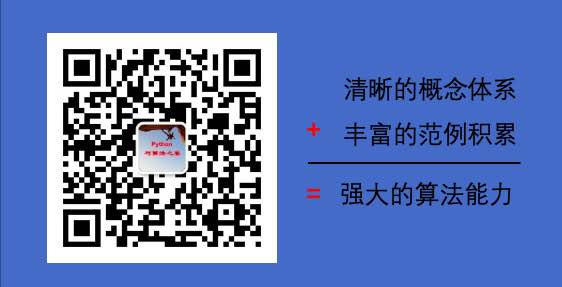2-1,张量数据结构#
程序 = 数据结构+算法。
TensorFlow程序 = 张量数据结构 + 计算图算法语言
张量和计算图是 TensorFlow的核心概念。
Tensorflow的基本数据结构是张量Tensor。张量即多维数组。Tensorflow的张量和numpy中的array很类似。
从行为特性来看,有两种类型的张量,常量constant和变量Variable.
常量的值在计算图中不可以被重新赋值,变量可以在计算图中用assign等算子重新赋值。
一,常量张量#
张量的数据类型和numpy.array基本一一对应。
import numpy as np
import tensorflow as tf
i = tf.constant(1) # tf.int32 类型常量
l = tf.constant(1,dtype = tf.int64) # tf.int64 类型常量
f = tf.constant(1.23) #tf.float32 类型常量
d = tf.constant(3.14,dtype = tf.double) # tf.double 类型常量
s = tf.constant("hello world") # tf.string类型常量
b = tf.constant(True) #tf.bool类型常量
print(tf.int64 == np.int64)
print(tf.bool == np.bool)
print(tf.double == np.float64)
print(tf.string == np.unicode) # tf.string类型和np.unicode类型不等价
True
True
True
False
不同类型的数据可以用不同维度(rank)的张量来表示。
标量为0维张量,向量为1维张量,矩阵为2维张量。
彩色图像有rgb三个通道,可以表示为3维张量。
视频还有时间维,可以表示为4维张量。
可以简单地总结为:有几层中括号,就是多少维的张量。
scalar = tf.constant(True) #标量,0维张量
print(tf.rank(scalar))
print(scalar.numpy().ndim) # tf.rank的作用和numpy的ndim方法相同
tf.Tensor(0, shape=(), dtype=int32)
0
vector = tf.constant([1.0,2.0,3.0,4.0]) #向量,1维张量
print(tf.rank(vector))
print(np.ndim(vector.numpy()))
tf.Tensor(1, shape=(), dtype=int32)
1
matrix = tf.constant([[1.0,2.0],[3.0,4.0]]) #矩阵, 2维张量
print(tf.rank(matrix).numpy())
print(np.ndim(matrix))
2
2
tensor3 = tf.constant([[[1.0,2.0],[3.0,4.0]],[[5.0,6.0],[7.0,8.0]]]) # 3维张量
print(tensor3)
print(tf.rank(tensor3))
tf.Tensor(
[[[1. 2.]
[3. 4.]]
[[5. 6.]
[7. 8.]]], shape=(2, 2, 2), dtype=float32)
tf.Tensor(3, shape=(), dtype=int32)
tensor4 = tf.constant([[[[1.0,1.0],[2.0,2.0]],[[3.0,3.0],[4.0,4.0]]],
[[[5.0,5.0],[6.0,6.0]],[[7.0,7.0],[8.0,8.0]]]]) # 4维张量
print(tensor4)
print(tf.rank(tensor4))
tf.Tensor(
[[[[1. 1.]
[2. 2.]]
[[3. 3.]
[4. 4.]]]
[[[5. 5.]
[6. 6.]]
[[7. 7.]
[8. 8.]]]], shape=(2, 2, 2, 2), dtype=float32)
tf.Tensor(4, shape=(), dtype=int32)
可以用tf.cast改变张量的数据类型。
可以用numpy方法将tensorflow中的张量转化成numpy中的张量。
可以用shape方法查看张量的尺寸。
h = tf.constant([123,456],dtype = tf.int32)
f = tf.cast(h,tf.float32)
print(h.dtype, f.dtype)
<dtype: 'int32'> <dtype: 'float32'>
y = tf.constant([[1.0,2.0],[3.0,4.0]])
print(y.numpy()) #转换成np.array
print(y.shape)
[[1. 2.]
[3. 4.]]
(2, 2)
u = tf.constant(u"你好 世界")
print(u.numpy())
print(u.numpy().decode("utf-8"))
b'\xe4\xbd\xa0\xe5\xa5\xbd \xe4\xb8\x96\xe7\x95\x8c'
你好 世界
二,变量张量#
模型中需要被训练的参数一般被设置成变量。
# 常量值不可以改变,常量的重新赋值相当于创造新的内存空间
c = tf.constant([1.0,2.0])
print(c)
print(id(c))
c = c + tf.constant([1.0,1.0])
print(c)
print(id(c))
tf.Tensor([1. 2.], shape=(2,), dtype=float32)
5276289568
tf.Tensor([2. 3.], shape=(2,), dtype=float32)
5276290240
# 变量的值可以改变,可以通过assign, assign_add等方法给变量重新赋值
v = tf.Variable([1.0,2.0],name = "v")
print(v)
print(id(v))
v.assign_add([1.0,1.0])
print(v)
print(id(v))
<tf.Variable 'v:0' shape=(2,) dtype=float32, numpy=array([1., 2.], dtype=float32)>
5276259888
<tf.Variable 'v:0' shape=(2,) dtype=float32, numpy=array([2., 3.], dtype=float32)>
5276259888
如果对本书内容理解上有需要进一步和作者交流的地方,欢迎在公众号"Python与算法之美"下留言。作者时间和精力有限,会酌情予以回复。
也可以在公众号后台回复关键字:加群,加入读者交流群和大家讨论。
